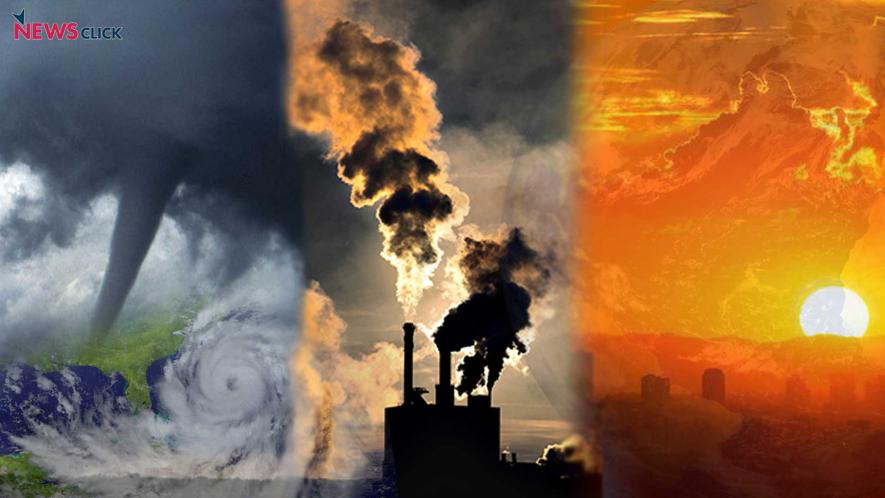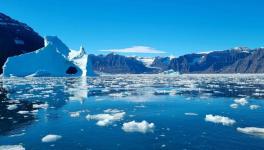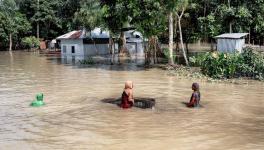Climate Change: UN Agency Report Shows Extreme Weather Conditions Continue to Advance

New Delhi: Planet Earth is witnessing the continuous advance of extreme weather conditions. With each year passing, man-made climate change manifests its onslaughts, primarily in extremity—extreme rain and flood, extreme heat and cold, and so on. In addition, the melting of Antarctic ice, rising sea water level etc., bearing potential for a more hazardous future, are also advancing quickly.
The latest ‘State of the Global Climate 2022’ report by the World Meteorological Organisation(WMO), a yearly assessment of the global climate, has also brought in the intensity of extreme weather across the world and how people have been affected by them. The report says—“From mountain peaks to ocean depths, climate change continued its advance in 2022. Droughts, floods and heatwaves affected communities on every continent and cost many billions of dollars. Antarctic sea ice fell to its lowest extent on record, and the melting of some European glaciers was, literally, off the charts.”
The year 2022 was not a deterrent in terms of increased greenhouse gas emissions, for which land, oceans and the atmosphere continue to change. Greenhouse gases are heat-trapping gases that increase the global temperature, and the year 2022 witnessed a record increase in these gases, the WMO report says. Three of the leading greenhouse gases that are high are carbon dioxide, methane, and nitrous oxide, and the year 2022 also witnessed their continuous rise. Methane concentration increased to a record high from 2020 to 2021.
Advancing of global warming has been manifested in terms of the warmest years recorded between 2015-2022. This is despite the continuous La Nina event for the past three years. Notably, La Nina typically has a cooling effect. melting of glacial ice and the concomitant sea level rise reached record levels in 2022, the report says. This trend is not going to wane anytime soon, even if the greenhouse gas emission becomes zero overnight, scientists warn.
Glacier thickness worldwide was lost by 1.3 meters between October 2021 and October 2022, on average. With the melting of glacial ice, the sea level rises at a record level. The report says an average of 4.62 millimetres of sea level rose between 2013 and 2022. This is double the rate of sea level rise between 1993 and 2002.
Commenting on the impacts of the extreme weather on world population, WMO secretary-general Professor Petteri Taalas said, “While greenhouse gas emissions continue to rise and the climate continues to change, populations worldwide continue to be gravely impacted by extreme weather and climate events. For example, in 2022, continuous drought in East Africa, record-breaking rainfall in Pakistan and record-breaking heatwaves in China and Europe affected tens of millions, drove food insecurity, boosted mass migration, and cost billions of dollars in loss and damage.”
The report also said that Oceans reached a new record-high heat content. Almost 90% of the heat on Earth trapped in greenhouse gases ends up in oceans. As global warming continues, the ocean temperature increases, threatening marine ecosystems. The report says that despite the cooling effect of La Nina, 58% of the ocean surface saw at least one heat wave in 2022. Remember, heating the seawater also makes storms more powerful and frequent, thus carrying the threat of loss of lives and properties.
Socio-Economic Impacts:
Extremity in weather conditions due to climate change results in acute impacts on people. Assessing the global climatic condition, the WMO report highlighted the drought that gripped East Africa, where rainfall has been the lowest in the past five seasons. Over 20 million people are facing food insecurity in the region.
On the other hand, Pakistan witnessed the worst flood ever in 2022 due to record breaking rain during July and August, where over 33 million people were impacted, with 8 million displaced.
Heat waves broke records in Europe, resulting in nearly 15,000 deaths across Spain, Germany, France, the UK and Portugal, the WMO report assesses. Similarly, China witnessed the worst heat waves for a prolonged period—mid-June to the end of August 2022.
The report says that 2.3 billion people across the globe face food insecurity, with 924 million affected severely. Some 767 million people face undernourishment in 2021, which accounts for 9.8% of the global population. Notably, half of this population resides in Asia and one-third in Africa. The year 2022 also declined crop yields in India and Pakistan due to pre-monsoon heat waves.
Get the latest reports & analysis with people's perspective on Protests, movements & deep analytical videos, discussions of the current affairs in your Telegram app. Subscribe to NewsClick's Telegram channel & get Real-Time updates on stories, as they get published on our website.























